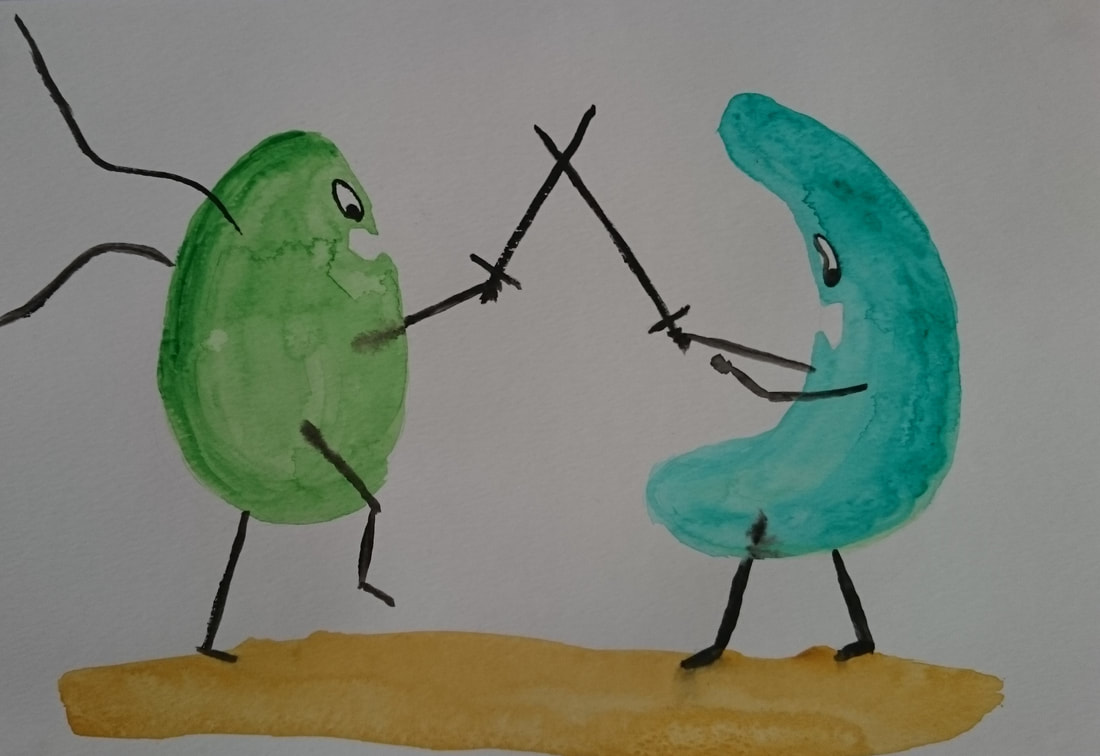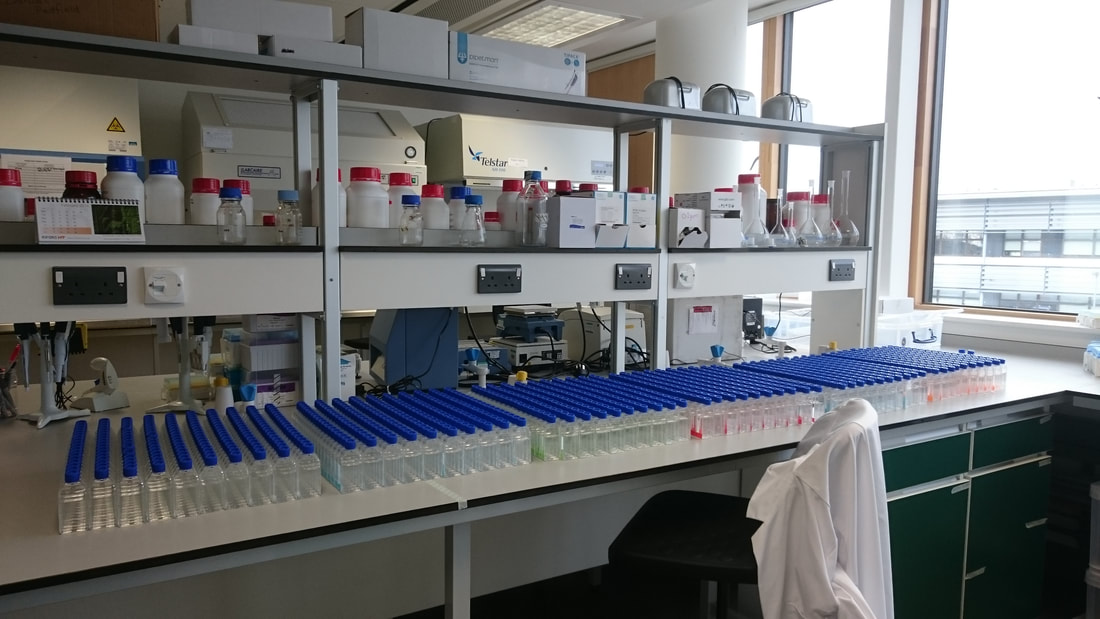Warmer waters will affect aquatic species. Some species might actually like a few degrees more (like me when I try to swim in Cornwall), while some might be very stressed by warmer temperatures. But what happens when species must compete against each other? I studied how competition between phytoplankton species might change with water temperature and nutrients; and how the traits of the species might help predict “who wins” in a warmer world.
I took 6 freshwater phytoplankton species and pitted them against each other in a brutal fight to death (or to dominance of a 24 well plate, but putting it like that is far less sexy) in four different conditions: a low temperature, high nutrient availability environment, a high temperature, high nutrient availability environment; and two low nutrient availability environment with high or low temperature (Fig. 1).
In the meantime, I studied how species responded to both temperature and nutrients in isolation by growing them at 5 temperatures x 13 nutrient concentrations (fun time, filling 1170 bottles with every possible combination of algae, temperature and nutrients, Fig 2).
Some species loved very high temperatures while other started to be stressed at medium temperatures. Further; the combination of nutrient and temperature had different impacts on the 6 species, which allowed to characterise some "nutrient" and "thermal" traits for each species. We then used these “thermal” and “nutrient” traits to try to predict the winner of competition in a warmer world.
Some species loved very high temperatures while other started to be stressed at medium temperatures. Further; the combination of nutrient and temperature had different impacts on the 6 species, which allowed to characterise some "nutrient" and "thermal" traits for each species. We then used these “thermal” and “nutrient” traits to try to predict the winner of competition in a warmer world.
A model composed of these simple nutrient and thermal traits allowed to very well predict the outcome of the competition. For instance, Chlorella was dominant against Scenedesmus in warm, high nutrient concentration waters, as shown in the extremely scientific Fig. 3 , while the reverse was true in cold waters.
Apart for the pleasure of filling thousands of bottles with algae, our results might help understanding how competition among species might be shaped by their environmental conditions in a context of global climate change
If you want to know more about this research, and do not trust that bad paintings are a scientific enough representation of what the paper was about, do not hesitate to look up the original paper:
Bestion E, García-Carreras B, Schaum C-E, Pawar S, Yvon-Durocher G. Metabolic traits predict the effects of warming on phytoplankton competition. Ecology Letters. 2018; doi:10.1111/ele.12932
Bestion E, García-Carreras B, Schaum C-E, Pawar S, Yvon-Durocher G. Metabolic traits predict the effects of warming on phytoplankton competition. Ecology Letters. 2018; doi:10.1111/ele.12932




 RSS Feed
RSS Feed
